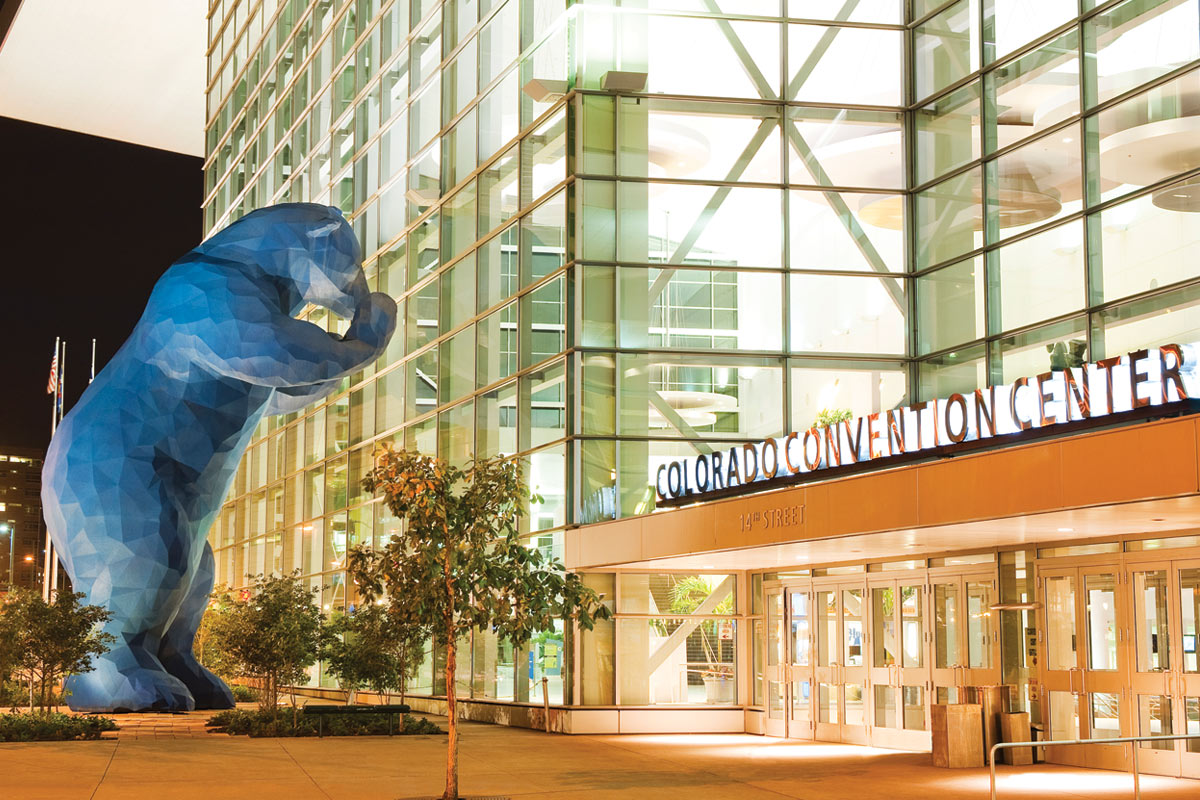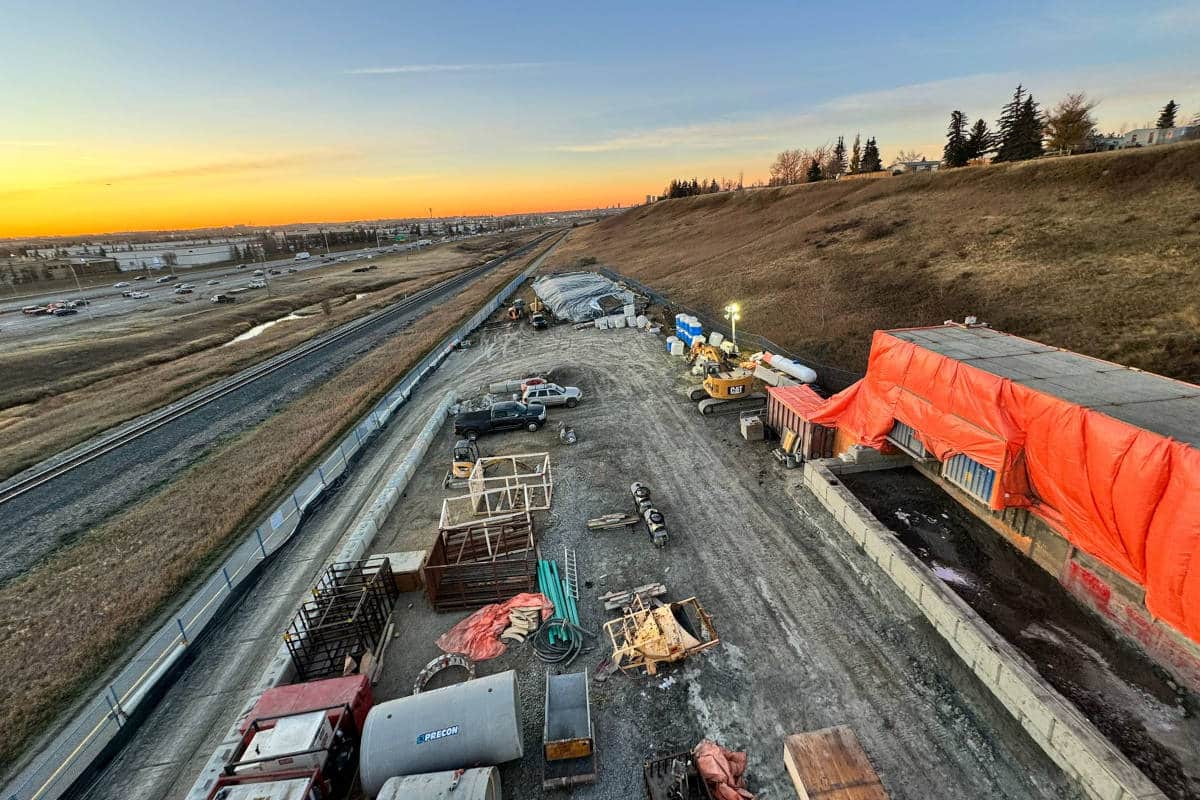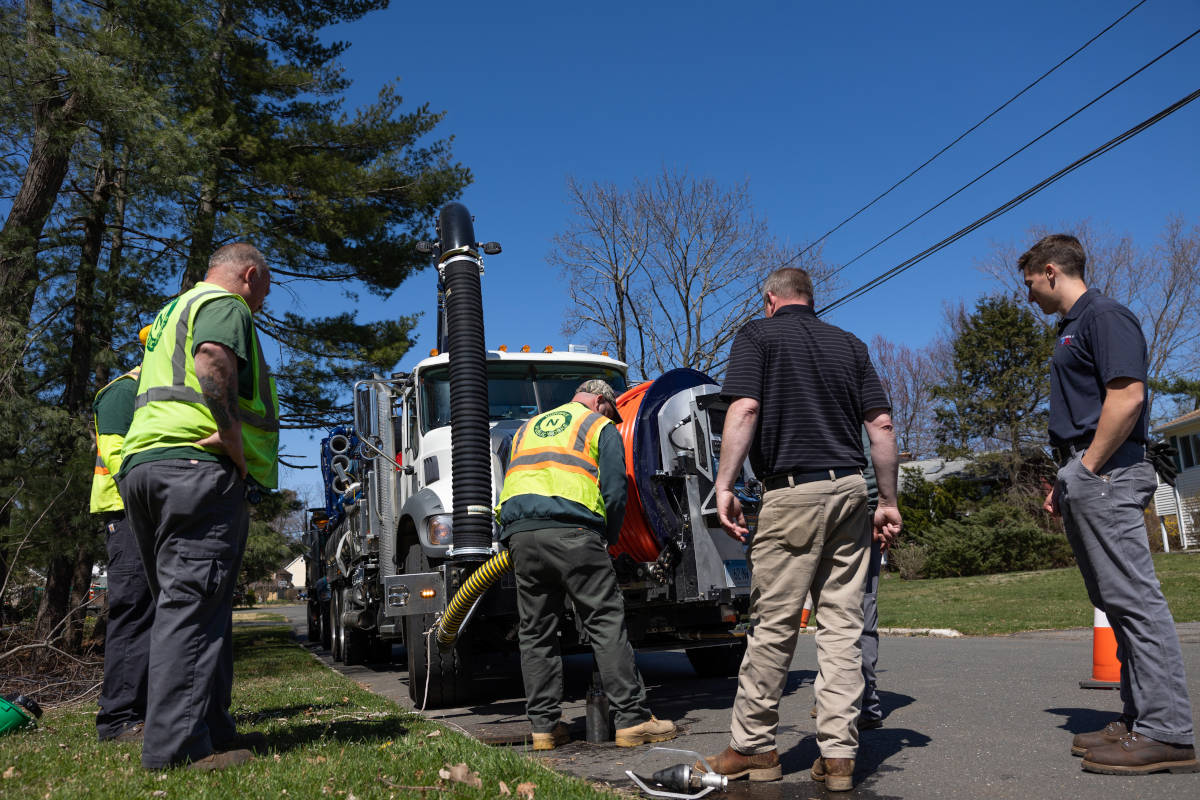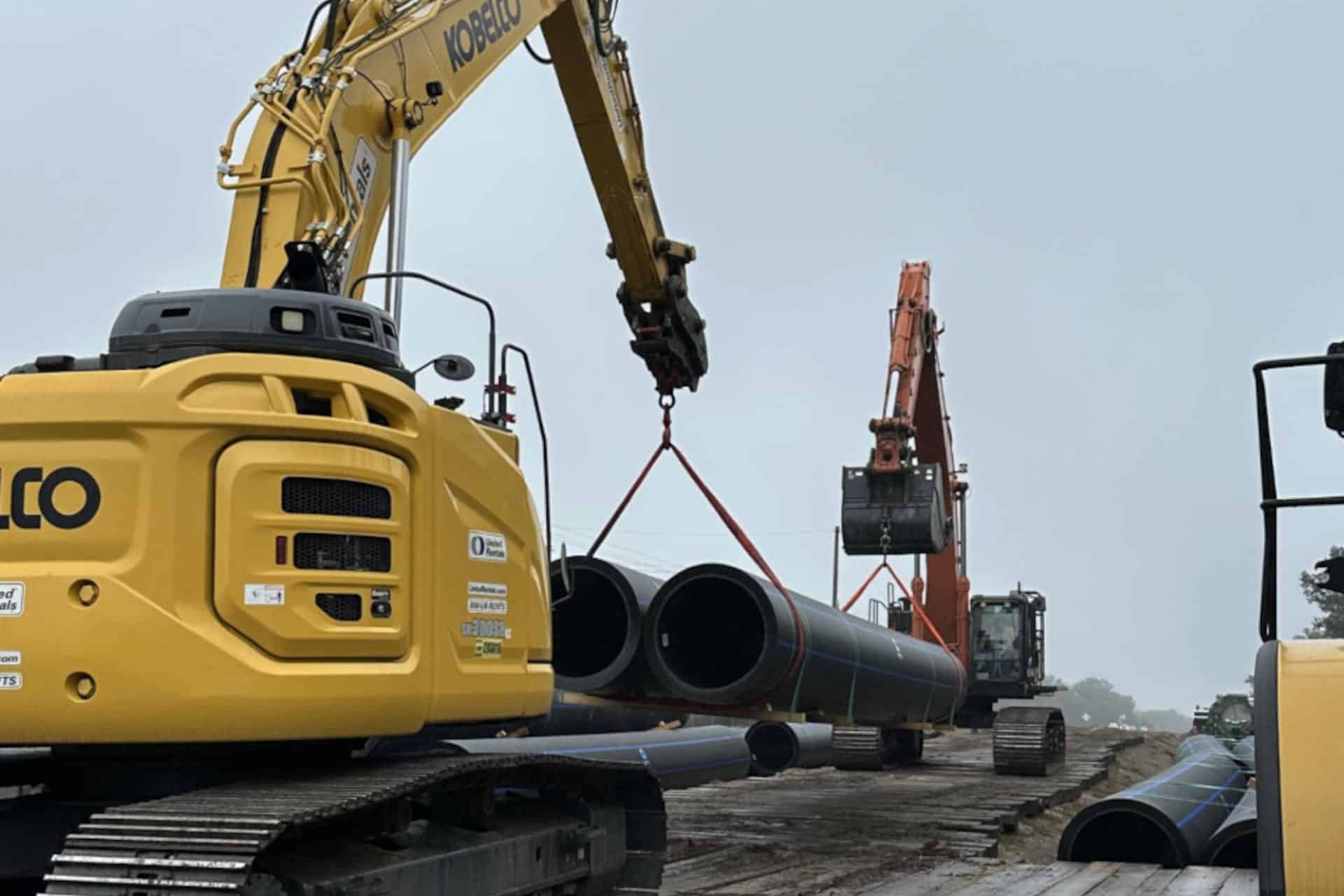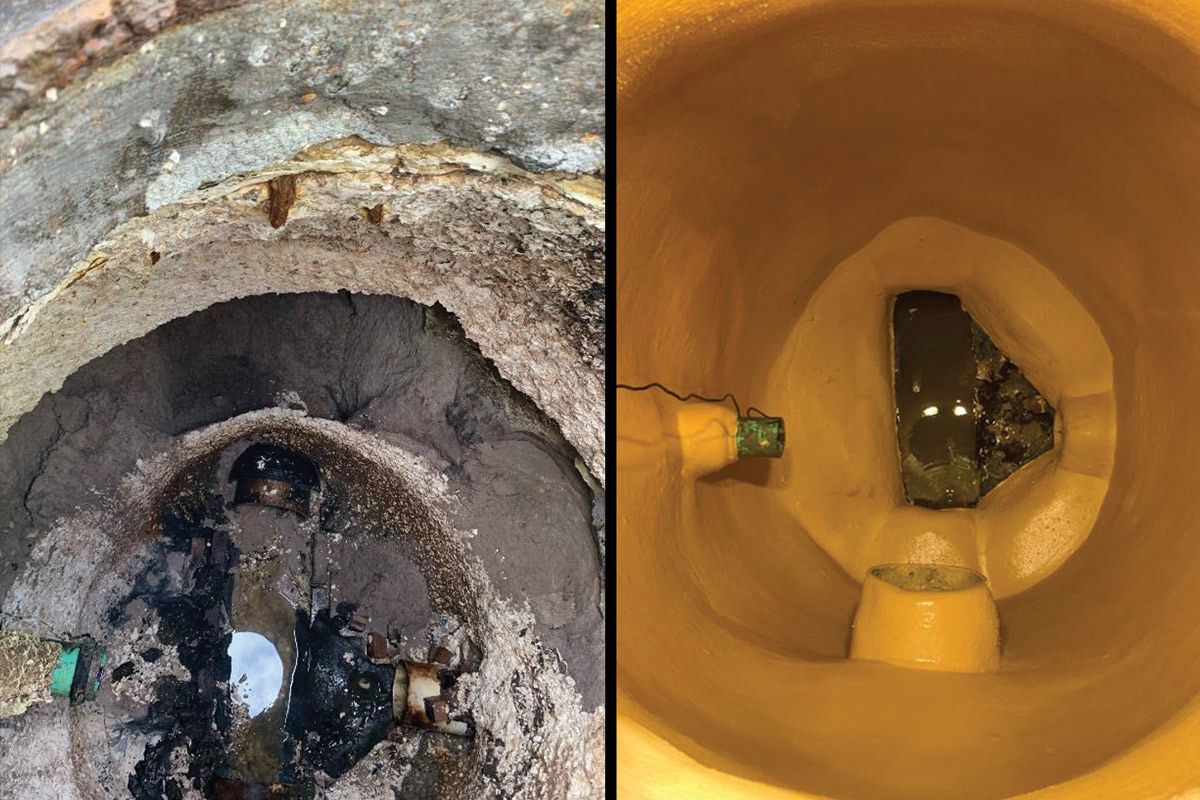
Transforming Infrastructure with Manhole Rehab in Florida
For more than 25 years, Sprayroq’s SprayWall was removed from a Florida utility’s standard list of approved products. This led to a two-decade gap during which conventional methods dominated their infrastructure rehabilitation projects.
Over time, the absence of SprayWall’s proven protection and structural integrity began to show its impact. Manholes across the Utility’s service area experienced gradual deterioration, leading to significant structural damage, operational inefficiencies, and costly repairs.
By early 2020, the accumulated deterioration had reached a critical point. Several manholes were in severe disrepair. The Utility’s engineering department identified seven particularly problematic manholes that required immediate attention. These manholes had suffered extensive corrosion, weakening, and structural compromise. This was due to environmental exposure and normal wear over the years.
Initially, the Utility proposed a conventional dig-and-replace approach to address the problem. The capital-improvements-funded project planned for the excavation and replacement of the deteriorated manholes with new structures. However, the project came with considerable challenges. The conventional method would require extensive excavation, heavy machinery, and continuous bypass pumping. This was needed to divert sewage flow during construction. Additionally, the project would necessitate major Maintenance of Traffic (M.O.T.) plans, resulting in significant disruptions to the local community. These included detours that would reroute traffic for miles around the construction site. The projected timeline for completion was at least six months. Thus, residents and businesses would experience prolonged inconvenience and disruption.
As plans for the dig-and-replace project advanced, word of Sprayroq’s dependable structural lining systems reached the Utility’s engineering department. The reliability and long-term performance of SprayWall piqued their interest. This led them to ask a pivotal question: “Could these manholes be repaired and structurally lined instead of being fully replaced?” This question set the stage for a groundbreaking shift in their approach to infrastructure rehabilitation.
Solution
The Utility sought the expertise of Sprayroq Certified Partner (SCP), Engineered Spray Solutions (ESS). They have over 25 years of experience in spray-applied infrastructure rehabilitation. ESS was tasked with evaluating whether the SprayWall system could be a viable alternative. Their assessment involved a thorough inspection of the seven manholes to determine the extent of deterioration and the potential for structural rehabilitation using SprayWall.
After completing their evaluation, ESS concluded that the manholes were suitable candidates for structural lining with SprayWall. The assessment determined that applying the lining at varying thicknesses could achieve the necessary structural integrity and long-term protection. Sprayroq’s engineering team recommended applying 500 mils of SprayWall to most of the manhole walls. They also suggested increasing the thickness to 1,000 mils in areas with severe deterioration. This approach would provide the necessary reinforcement while accommodating the unique conditions of each manhole.
ESS presented their findings and recommendations to the Utility’s engineering department in a comprehensive turnkey proposal. The proposal included not only the technical specifications for the SprayWall application but also detailed plans for bypass pumping and M.O.T. to minimize community disruption. One key aspect of the proposal was the plan to limit disruptions to a single-lane closure. Thus, significantly reducing the impact on local residents compared to the extensive detours required by the original plan.
The Utility was impressed by the cost savings, reduced construction timeline, and minimal disruption offered by the SprayWall solution. Compared to the six-month estimate for the dig-and-replace project, the SprayWall approach promised a much faster turnaround with fewer complications. The Utility approved the proposal, recognizing the benefits it would bring to both their operations and the community.
The project was executed seamlessly. ESS applied SprayWall as specified to restore the structural integrity of the manholes. The work was completed in July 2021, on schedule and within budget. Throughout the project, there were no complaints from residents. This was a testament to the effective planning and execution by the Sprayroq team and ESS.
Conclusion
The success of this project marked a significant turning point for the Utility’s approach to infrastructure rehabilitation. As of August 2021, the Utility began re-evaluating their capital improvement projects and budgeting practices. They considered Sprayroq’s structural lining solutions as a viable alternative to traditional excavation and replacement methods. The remarkable performance of SprayWall, coupled with the cost savings and minimal disruption, demonstrated the value of structural rehabilitation.
In addition to the immediate project success, Sprayroq’s efforts led to the reinstatement of SprayWall on the Utility’s approved products list. This milestone effectively changed the Utility’s long-held perceptions about excavation versus rehabilitation. By incorporating Sprayroq’s solutions into their standard practices, the Utility can now address future infrastructure issues more efficiently and cost-effectively.
This case study highlights the power of innovative thinking and proven technology in overcoming long-standing challenges. The collaboration between Sprayroq, ESS, and the Utility not only saved time and money but also established a model for modern infrastructure rehabilitation. This new model prioritizes sustainability, community impact, and long-term performance. With SprayWall back in their toolkit, the Utility is better equipped to tackle future projects. They can do this while minimizing disruption and maximizing value for the community.
Sean Fejes is a writer with Signet LLC.

